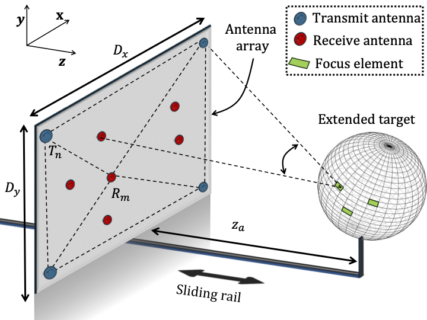Performance Optimization for Near-field Multistatic Radar Imaging
Performance Optimization for Near-field Multistatic Radar Imaging
Multistatic radar imaging is an advanced sensing technology that enables the precise reconstruction of complex three-dimensional (3D) structures while allowing the penetration of surfaces for deeper imaging insights. In particular, the use of planar arrays with multiple transmitters and receivers in the millimeter-wave (mmWave) band has been shown to provide ultra-high-resolution imaging across a range of applications, including automotive radar and medical imaging. The increased flexibility offered by multistatic systems presents an opportunity to enhance the imaging performance by optimizing factors such as antenna placement, proximity to the target, and operating frequencies. These parameters can affect different radar aspects, such as the radar’s point spread function (PSF), which reflects the lateral and range resolution of the system. However, limiting factors such as hardware constraints on antenna spacing, array size, or bandwidth should be carefully considered. This research project aims to explore multistatic radar imaging systems and their applications. To this end, key performance metrics will be identified to optimize radar imaging quality.
Tasks:
- Conduct a targeted literature review and identify relevant performance metrics.
- Model the system described above.
- Formulate an optimization framework aimed at improving the radar imaging performance.
- Propose a solution to the formulated problem.
Prerequisites:
- Basic knowledge in communication and radar systems.
- Basic knowledge of convex optimization.
- Programming skills Experience in programming languages (Python and/or Matlab).
For all details, see the project description.
If you are interested, please contact Amine Lahmeri or Sebastian Lotter.
